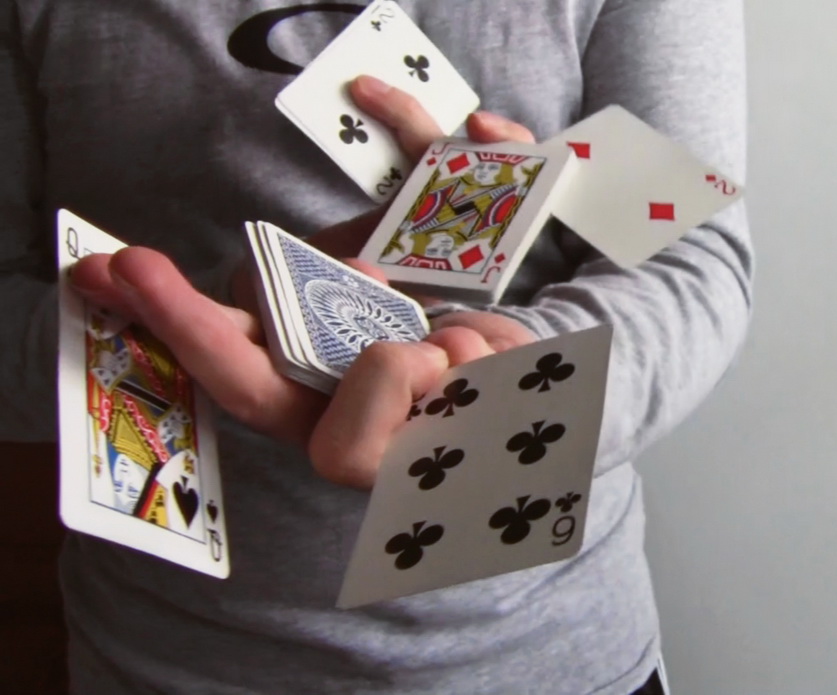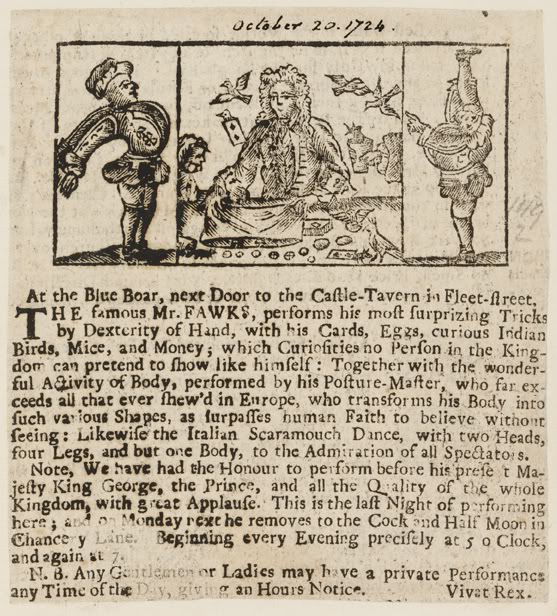|
Palming
Palming is a technique for holding or concealing an object in the hand. It is used frequently by magicians to conceal a card, coin, or other object. When it is done skillfully, the hand containing the palmed object is perceived to be completely empty. Methods A method for palming is known as a palm. These methods differ depending on the object intended to be concealed: its particular size, shape and flexibility. Any method of holding the object in the hand so that it cannot be directly seen by the spectators and such that the position of the hand does not arouse suspicion, i.e. the hand is perceived to be empty, can be used as a palm. Uses Palming an object generally allows for one of four effects to take place: * ''Vanishing'' an object can be achieved by palming it. Used properly, the object will seem to have disappeared completely, and the performer's hands will appear to be empty. * ''Producing'' an object can also be achieved by reversing the action of palming. * ''Transpos ... [...More Info...] [...Related Items...] OR: [Wikipedia] [Google] [Baidu] |
Miser's Dream
Miser's Dream is a magic routine where the magician produces coins from the air (and often other places) and drops them into a receptacle they are holding, usually a metal bucket. It has also been called "Aerial Treasury". It was invented in the 19th century and popularized by T. Nelson Downs circa 1895. The trick is considered a crowd-pleaser, with an easy to follow plot based on a common desire. Its secret method usually involves palming. Selected Performers * Al Flosso * Jeff McBride * Penn & Teller (variation producing coins from a fish tank) * Robert-Houdin * T. Nelson Downs (using a hat) See also * Coin snatching Coin snatching, often nicknamed the Chinese elbow trick, consists of a simple illusion in which a coin is placed on the elbow, the hand of the same arm is placed on the arm's shoulder, and the hand is swung forward to catch the coin. The trick can ... References Coin magic {{Magic-stub ... [...More Info...] [...Related Items...] OR: [Wikipedia] [Google] [Baidu] |
Sleight Of Hand
Sleight of hand (also known as prestidigitation or ''legerdemain'' ()) refers to fine motor skills when used by performing artists in different art forms to entertain or manipulate. It is closely associated with close-up magic, card magic, card flourishing and stealing. Because of its heavy use and practice by magicians, sleight of hand is often confused as a branch of magic; however, it is a separate genre of entertainment and many artists practice sleight of hand as an independent skill. Sleight of hand pioneers with worldwide acclaim include Dan and Dave, Ricky Jay, Derek DelGaudio, David Copperfield, Yann Frisch, Norbert Ferré, Dai Vernon, Cardini, Tony Slydini and Helder Guimarães. Etymology and history The word ''sleight'', meaning "the use of dexterity or cunning, especially so as to deceive", comes from the Old Norse. The phrase ''sleight of hand'' means "quick fingers" or "trickster fingers". Common synonyms of Latin and French include ''prestidigitation'' and ' ... [...More Info...] [...Related Items...] OR: [Wikipedia] [Google] [Baidu] |
Tenkai Palm
The Tenkai palm is a card magic technique used to palm a card. It was invented by the Japanese magician Tenkai was a Japanese Tendai Buddhist monk of the Azuchi-Momoyama and early Edo periods. He achieved the rank of ''Daisōjō'', the highest rank of the priesthood. His Buddhist name was first , which he changed to Tenkai in 1590. Also known as , he ..., whose real name was Teijiro Ishida (1889–1972). The Tenkai palm has many applications in card magic, as well as other manipulative magic with objects of a similar size, such as jumbo coins. Additionally, the Tenkai palm allows a great deal of freedom in the methods of concealing and revealing. References {{reflist Card tricks Card magic Sleight of hand ... [...More Info...] [...Related Items...] OR: [Wikipedia] [Google] [Baidu] |
Card Magic
Card manipulation is the branch of magic that deals with creating effects using sleight of hand techniques involving playing cards. Card manipulation is often used in magical performances, especially in close-up, parlor, and street magic. Some of the most recognized names in this field include Dai Vernon, Tony Slydini, Ed Marlo, S.W. Erdnase, Richard Turner, John Scarne, and Ricky Jay. Before becoming world-famous for his escapes, Houdini billed himself as "The King of Cards". Among the more well-known card tricks relying on card manipulation are Ambitious Card, and Three-card Monte, a common street hustle also known as Find the Lady. History Playing cards became popular with magicians in the 15th century as they were props which were inexpensive, versatile, and easily available. Card magic has blossomed into one of the most popular branches of magic, accumulating thousands of techniques and ideas. These range from complex mathematics like those used by Persi Diaconis, the u ... [...More Info...] [...Related Items...] OR: [Wikipedia] [Google] [Baidu] |
Magic (illusion)
Magic, which encompasses the subgenres of illusion, stage magic, and close up magic, among others, is a performing art in which audiences are entertained by tricks, effects, or illusions of seemingly impossible feats, using natural means. It is to be distinguished from paranormal magic which are effects claimed to be created through supernatural means. It is one of the oldest performing arts in the world. Modern entertainment magic, as pioneered by 19th-century magician Jean-Eugène Robert-Houdin, has become a popular theatrical art form. In the late 19th and early 20th centuries, magicians such as Maskelyne and Devant, Howard Thurston, Harry Kellar, and Harry Houdini achieved widespread commercial success during what has become known as "the Golden Age of Magic." During this period, performance magic became a staple of Broadway theatre, vaudeville, and music halls. Magic retained its popularity in the television age, with magicians such as Paul Daniels, David Copperfield ... [...More Info...] [...Related Items...] OR: [Wikipedia] [Google] [Baidu] |
Card Palming
Card or The Card may refer to: * Various types of plastic cards: **By type ***Magnetic stripe card ***Chip card ***Digital card **By function ***Payment card ****Credit card ****Debit card ****EC-card ****Identity card ****European Health Insurance Card ****Driver's license * Playing card, a card used in games * Printed circuit board * Punched card, a piece of stiff paper that holds digital data represented by the presence or absence of holes in predefined positions. *In communications ** Postcard ** Greeting card, an illustrated piece of card stock featuring an expression of friendship or other sentiment * \operatorname, in mathematical notation, a function that returns the cardinality of a set * Card, a tool for carding, the cleaning and aligning of fibers * Sports terms ** Card (sports), the lineup of the matches in an event ** Penalty card As a proper name People with the name * Card (surname) Companies * Cards Corp, a South Korean internet company Arts and entertainment * " ... [...More Info...] [...Related Items...] OR: [Wikipedia] [Google] [Baidu] |
Magic Tricks
Magic, which encompasses the subgenres of illusion, stage magic, and close up magic, among others, is a performing art in which audiences are entertained by tricks, effects, or illusions of seemingly impossible feats, using natural means. It is to be distinguished from paranormal magic which are effects claimed to be created through supernatural means. It is one of the oldest performing arts in the world. Modern entertainment magic, as pioneered by 19th-century magician Jean-Eugène Robert-Houdin, has become a popular theatrical art form. In the late 19th and early 20th centuries, magicians such as Maskelyne and Devant, Howard Thurston, Harry Kellar, and Harry Houdini achieved widespread commercial success during what has become known as "the Golden Age of Magic." During this period, performance magic became a staple of Broadway theatre, vaudeville, and music halls. Magic retained its popularity in the television age, with magicians such as Paul Daniels, David Copperfield, ... [...More Info...] [...Related Items...] OR: [Wikipedia] [Google] [Baidu] |
Coin Magic
Coin magic is the manipulating of coins to entertain audiences. Money Magic, pp. 175-221. Because coins are small, most coin tricks are considered close-up magic or table magic, as the audience must be close to the performer to see the effects. Though stage conjurers generally do not use coin effects, coin magic is sometimes performed onstage using large coins. In a different type of performance setting, a close-up coin magician (or 'coin worker') will use a large video projector so the audience can see the magic on a big screen. Coin magic is generally considered harder to master than other close-up techniques such as card magic, as it requires great skill and grace to perform convincingly, and this requires much practice to acquire. Elements Coin effects include productions, vanishes, transformations, transpositions, teleportations, penetrations, restorations, levitations and mental magic—some are combined in a single routine. A simple effect might involve borrowing a coin, mak ... [...More Info...] [...Related Items...] OR: [Wikipedia] [Google] [Baidu] |





